Bridge Plates on Martin Guitars
The bridge plate is a small, thin block of wood, usually made of mahogany, maple, or rosewood, roughly the same size as the bridge, and glued inside the top, opposing the bridge, to stiffen the top and provide a hard surface to keep the ends of the strings from wearing through the top.
Some of the earliest Viennese Style Martins with ladder bracing had rectangular maple bridge plates, while some had no bridge plates at all, even with pin style bridges.
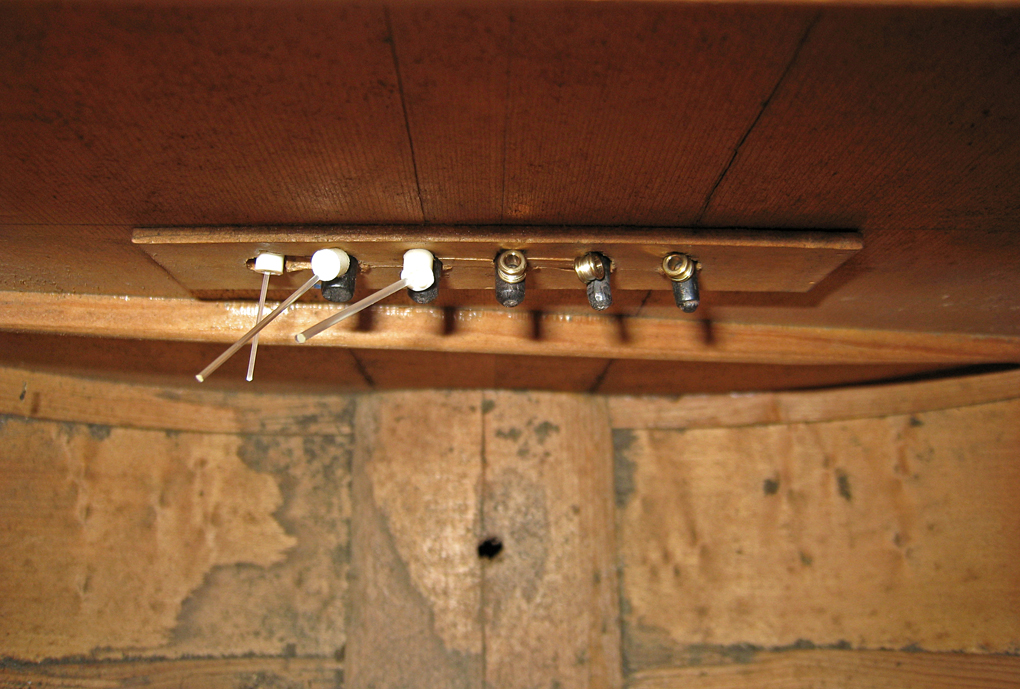
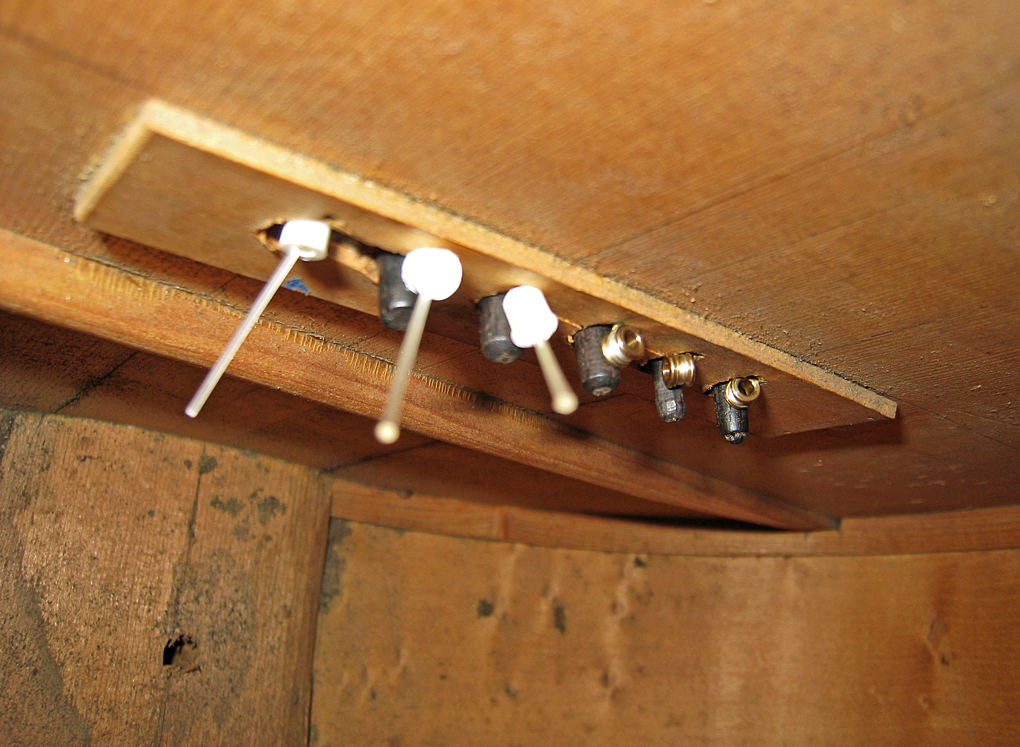
Early fan braced Martins also sometimes had rectangular maple bridge plates.
1840's Martin & Coupa Guitar
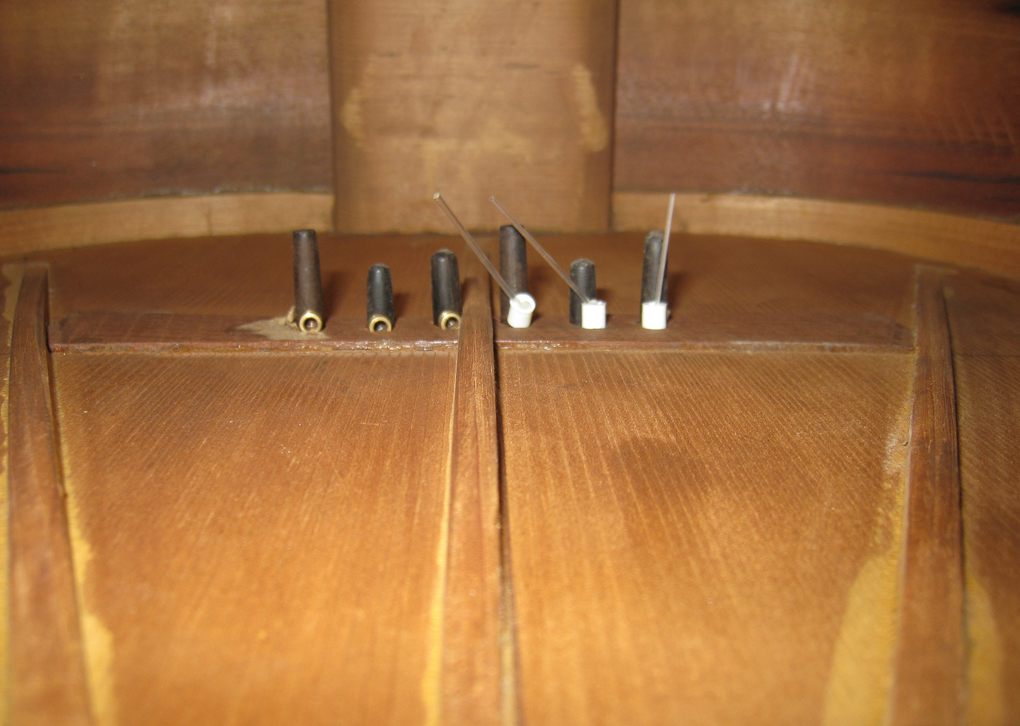
1840's "Renaissance Style" Martin
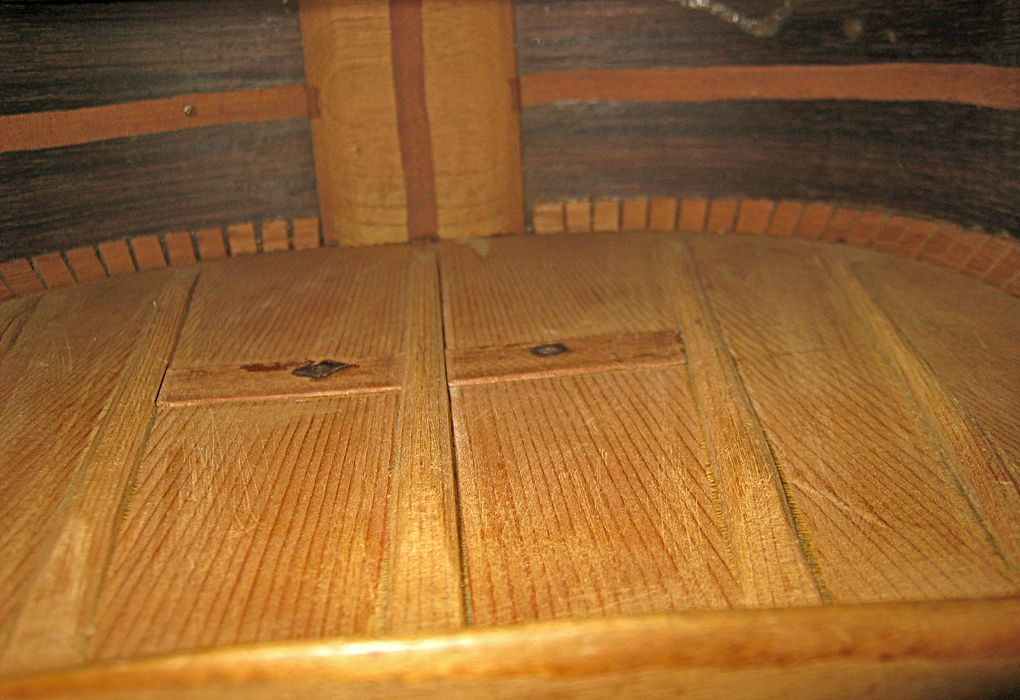
Early X braced Martins had thin mahogany bridge plates notched through the braces, with tapered ends.
Spanish Martin Style 28
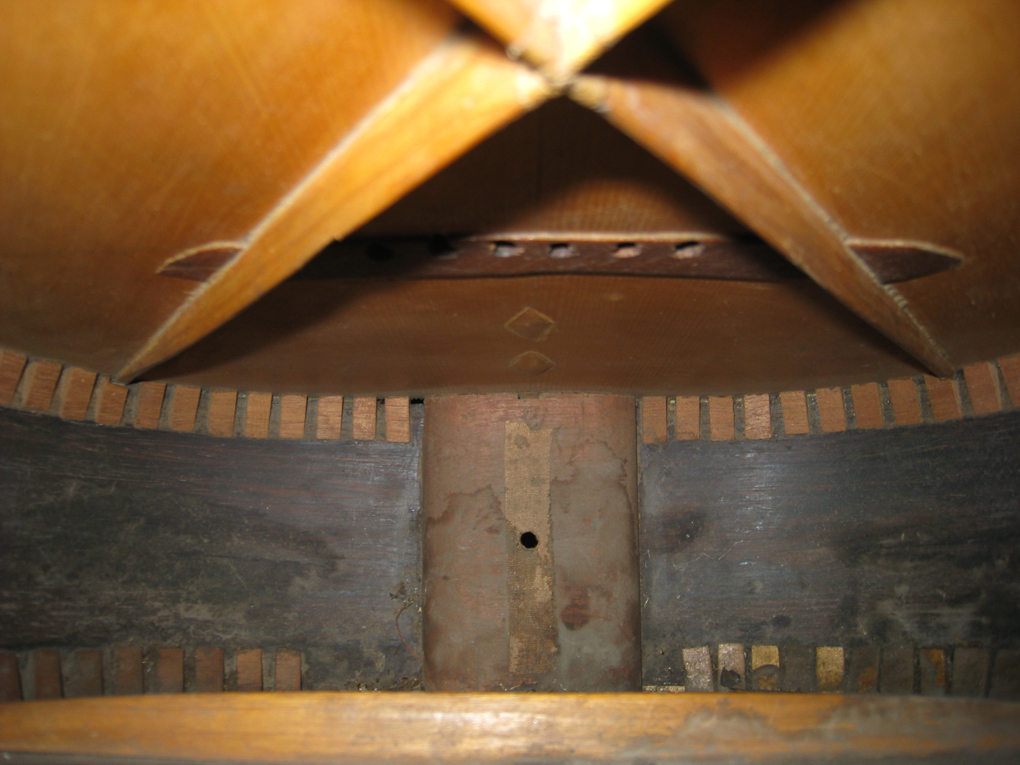
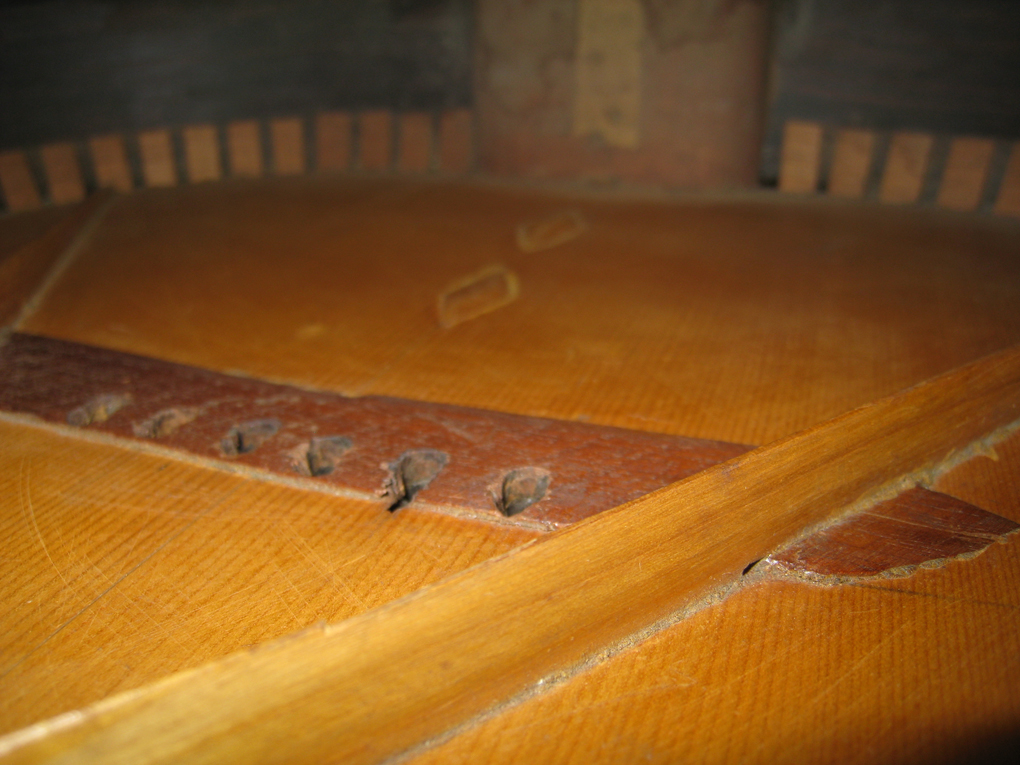
During this period of experimental X braced guitars, Martin started using trapezoidal mahogany bridge plates with ends tucked into the braces,
which continued to be used for several decades.
1840's Spanish Style Martin
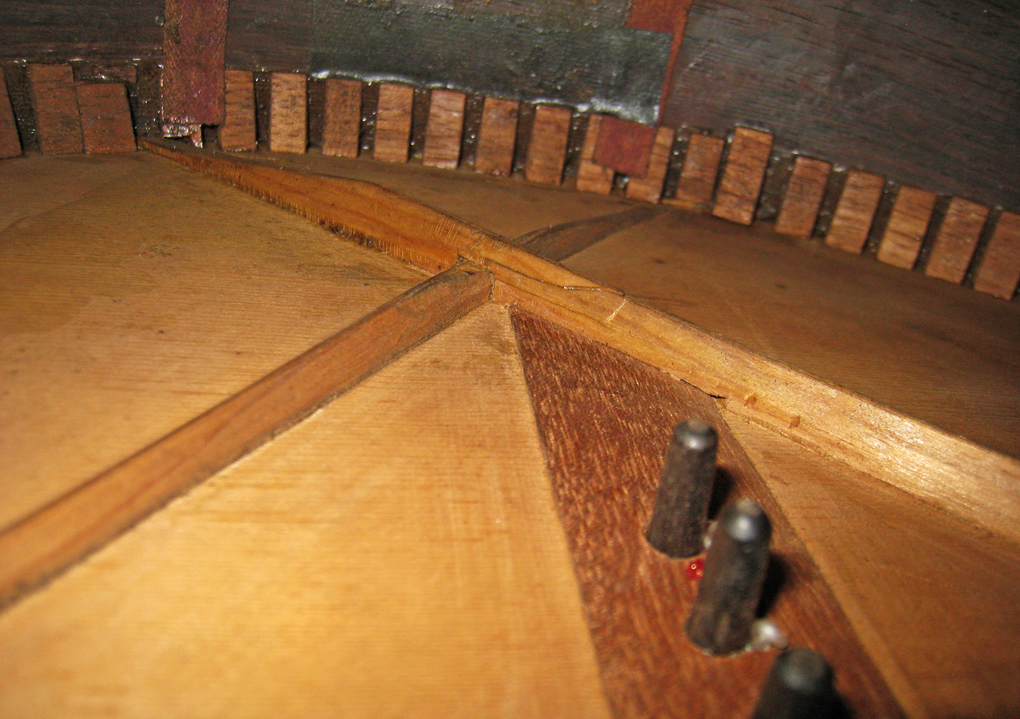
c. 1846 Spanish Style Martin Guitar

c. 1840's Martin "ZigZag" Style 28
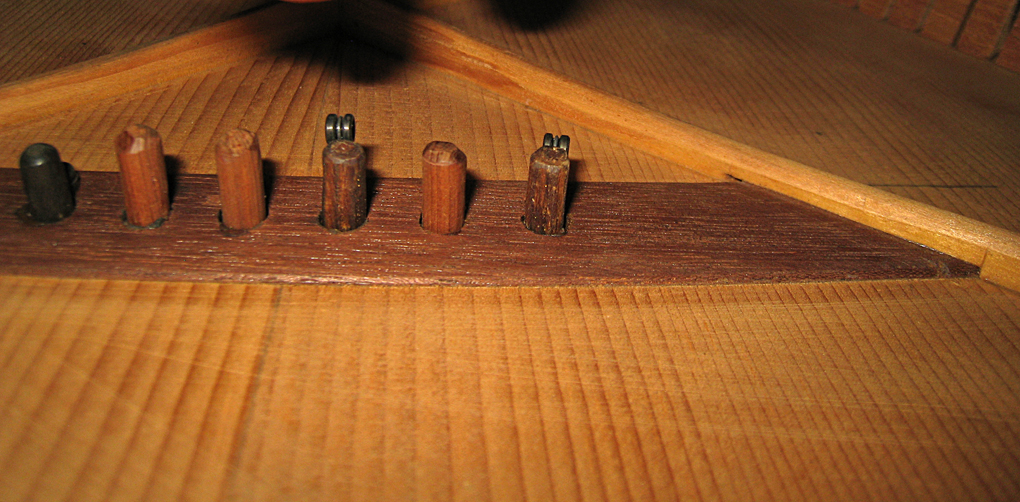
c. 1840's Martin "ZigZag" Style 21

c. 1860's Martin Style 2-24
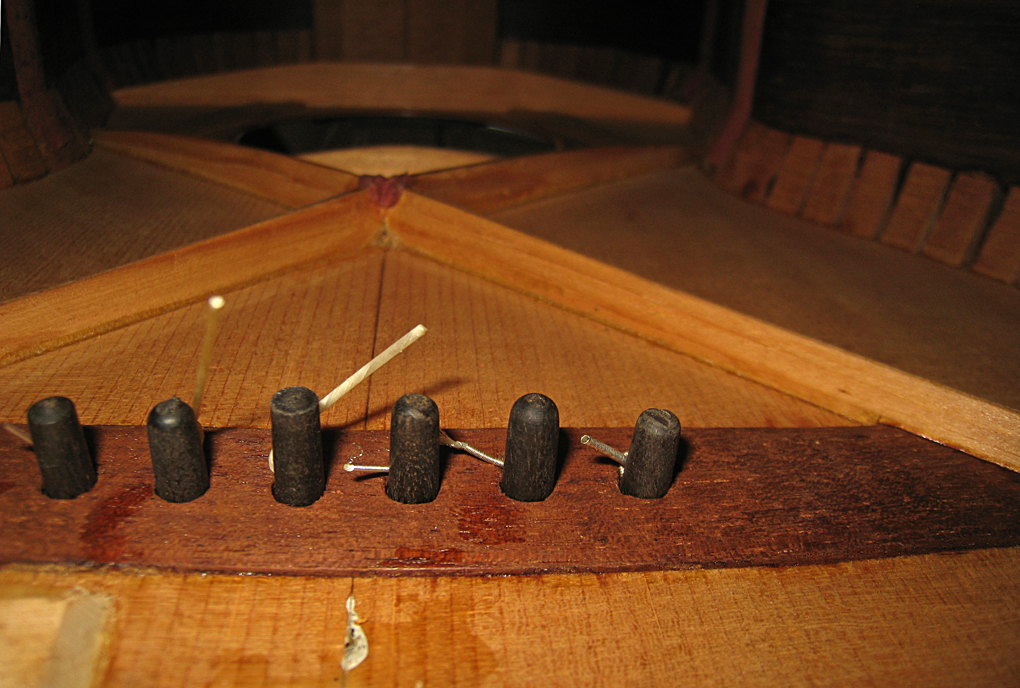
By the 1880's, most Martins were built with trapezoidal maple bridge plates again.
1886 Style 3-24
1894 Style 1-26
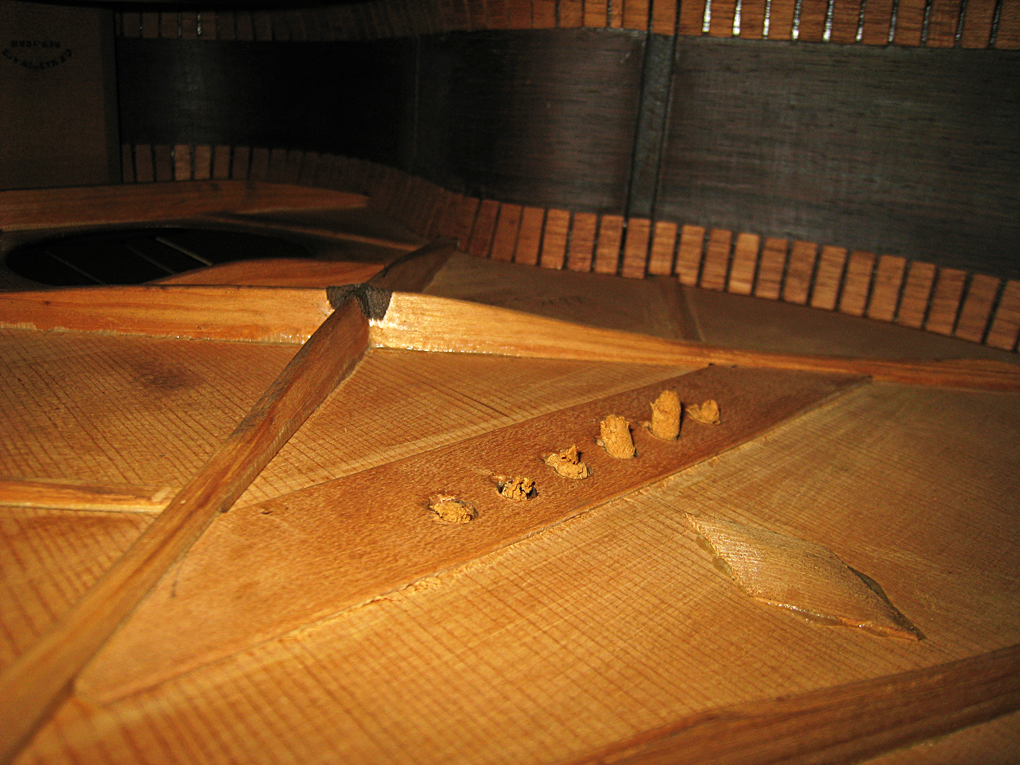
vintagemartin.com
To See Robert Corwin's Classic Photography of Folk and Roots Musicians, visit:
For Information on Photography for
Exhibition, Publication, CD's, Promotion, Web Pages, Tour Books,
to Purchase Photographic Prints, or
If You Have Questions or Suggestions About This Web Site or Vintage Martin Guitars:
e-mail: Robert Corwinentire site copyright ©1998 through 2012 Robert Corwin/Photo-Arts. All rights reserved.